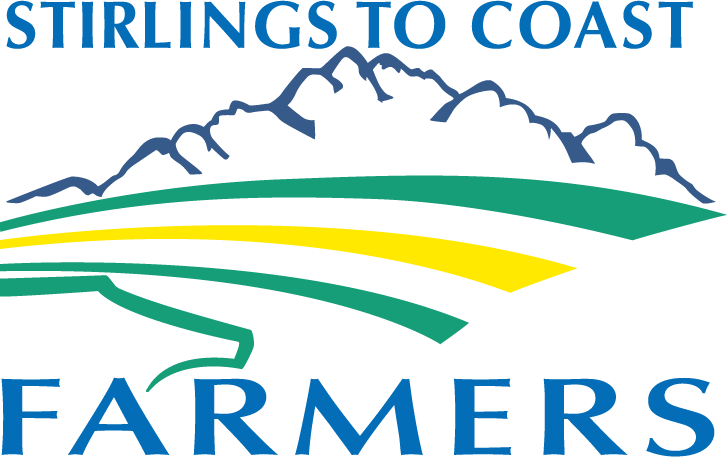Demonstration of an
in-paddock cattle weighing system
Summary:
The aim of this producer demonstration site project is to utilise an Optiweigh unit on properties in southern WA to demonstrate the value of in-paddock cattle weighing systems for improved labour efficiency, monitoring animal weights and optimising compliance with target market weight specifications.
Project Background:
The aim of this producer demonstration site project is to utilise an Optiweigh unit on properties in southern WA to demonstrate the value of in-paddock cattle weighing systems for improved labour efficiency, monitoring animal weights and optimising compliance with target market weight specifications.
Cattle producers growing out cattle in extensive paddock environments are not regularly weighing their animals and can therefore be delayed in noticing any changes in growth rates. Typical systems require animals to be brought to a central set of cattle yards to be weighed - a time and labour consuming job and inefficient if weight monitoring is the sole purpose of the yarding. The time involved can be anywhere from a half day to a full day’s work for two farm labour units depending on herd size and distance to be travelled to cattle yards. For an individual farm business, the cost is likely in the $1000’s per year and for the region, in the $100,000’s. There is also the opportunity cost (which hard to correctly quantify) from the delay in noticing growth rate reduction. The stress of moving, being yarded, and losing important grazing time also negatively impacts cattle growth. For producers aiming to finish cattle or reach target weights efficiently, any reduction in weight gain or subpar growth rates is economically significant to the enterprise. Suppose a producer can monitor weights with in-paddock weighing equipment in real-time. In that case, the producer can respond to growth rate changes by providing additional supplementation or other suitable interventions in a timelier manner. Real-time data can also be used to plan sale dates and numbers, ensuring cattle are more likely to meet target weights and hit market specifications more accurately.
Project Methodology:
This project will be undertaken on a minimum of six properties and six herds of cattle across the Southern WA region over three years. Each producer will use the unit for at least one period on one herd of cattle across the project duration. Herd choice will be at the discretion of the producer. In each demonstration, the minimum recommended use of the Optiweigh will be guided by Bill Mitchell’s (the designer and owner of Optiweigh) advice that three to five consecutive days of use in a mob every three weeks provides enough information to gather the necessary data to predict average daily gains and growth rates. This advice will be given to the site hosts when planning their use and may allow for more herds (over and above the minimum six specified) to be monitored. Extra data, if available will also be included in the project and reporting.
As our producers have various classes and breeds of animals, including weaners, trade cattle, cows with mature calves at foot, yearling bulls and replacement heifers, it is hoped the benefits of Optiweigh can be quantified across some of these various herds. Herd size in the demonstrations will likely range from small herds of bulls at around 35 head to trade cattle herds of about 150. This, combined with different management practices between producers, will demonstrate close to year-round use of the Optiweigh across these properties. In addition, the Optiweigh may be demonstrated in feedlot situations.
Standard Data collection from each demonstration site will include:
Weight data from the Optiweigh (directly from Optiweigh).
Labour costs with/without Optiweight use (Pre/Post demonstration producer survey).
Qualification of reduced loss of grazing time through using Optiweigh (Pre/Post demonstration producer survey).
Information on % turnoff to target markets and in specific timeframes, as assisted by use of Optiweigh data, compared to previous performance (Pre/Post demonstration producer survey), where appropriate.
Information on achievement of market specifications (% compliance), assisted by use of Optiweigh data, compared to previous performance (Pre/Post demonstration producer survey), where appropriate.
Where Optiweigh data points to herd growth plateauing or reducing, investigation will be undertaken and may include:
Pasture cuts completed and analysed (Stirlings to Coast Farmers)
Animal nutritionist/vet consulted (organised by Stirlings to Coast Farmers)
To demonstrate to observer producers the accuracy of the animal weights collected and calculated by the Optiweigh, we will ask the producer to yard weigh the cattle at least once when the Optiweigh is in use on their property.
Survey data and information collected for case studies on each site host will form the basis of an analysis of the value of an in-paddock cattle weighing system to be conducted at the completion of the field trials. Productivity KPIs of production efficiency, labour efficiency, market accuracy, market compliance and selling time will be reported on (as described above). Annual field days, at least three case studies, SCF newsletter articles, planning workshops with core producers and a video explaining benefits will also address the KPIs as well as provide a platform to discuss how to best analyse the data and make better informed decisions through use of this data. This may include involving marketing experts and animal nutrition consultants.
RESOURCES
ACKNOWLEDGEMENTS
This producer demonstration site project is supported by Meat and Livestock Australia and the MLA Donor Company.


